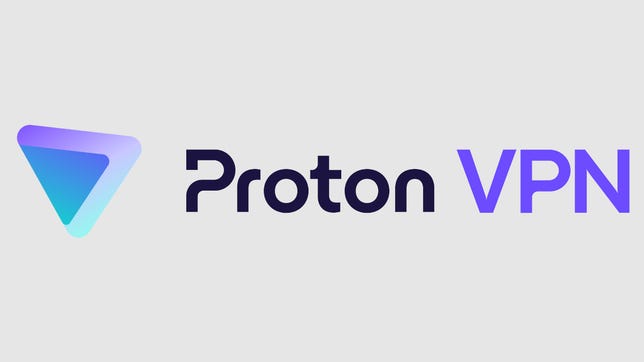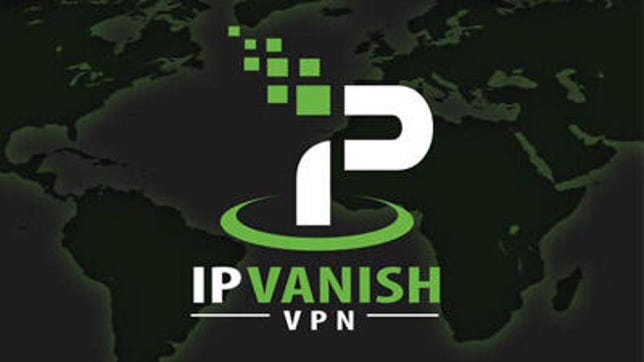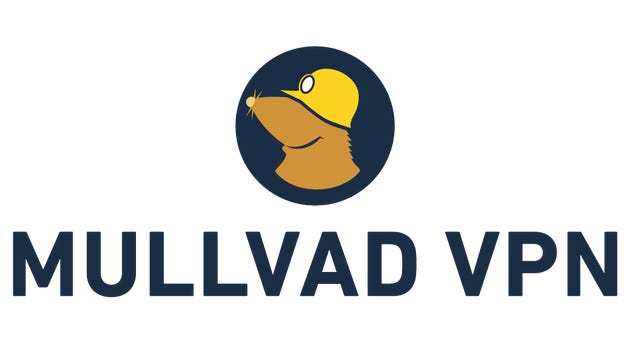Technologies
Best Cheap VPN for March 2023
Protect your privacy on a budget with these cheap VPNs.

If you’re feeling the pinch of inflation and strapped for cash right now, the idea of using a free VPN might sound alluring. But some things — like your online privacy and security — are non-negotiable. Free VPNs are typically less safe, which is why we recommend you avoid using the vast majority of them (however, we do recommend sampling premium services for free). Fortunately, it’s possible to get a high-quality VPN for desktop and mobile that’s affordable. We’ve rounded up our recommendations for the best cheap VPN services that don’t compromise on features or speed.
A number of cheap VPN services offer a speedy connection, strong security and a wide array of privacy features — all for less than half the cost of a premium VPN service. You can even hook up your phone or tablet for secure browsing on your mobile device. Each of these cheap VPN services offers monthly pricing options, or if you prefer, you can pay in one lump sum for an entire year.We’ve spent countless hours testing these cheap VPN providers and have compiled a list of great budget-friendly choices.
Since the VPN market is constantly evolving and VPN services change rapidly, we advise against signing up for a subscription that lasts two years or longer. Instead, we recommend sticking with the plans that are cheapest based on their one-year or one-month rates and have the best money-back guarantees.While a lot of VPN providers offer better month-to-dollar value when you go for these long-term plans, you should avoid those kinds of lengthy VPN commitments. Check out our list of the best cheap VPN services of 2023.
Watch this: Top 5 Reasons to Use a VPN
Surfshark
- Latest tests: Zero data leaks, 19% internet speed loss in fall 2022 tests
- Network: 3,200-plus in 99 countries
- Jurisdiction: Netherlands
- Price: Unlimited connections for $48 for the first year (then $60 annually) or $13 per month. 2-year subscriptions available.
Surfshark earned CNET’s Editors’ Choice Best Value VPN in 2022. It offers solid privacy and security features, a polished interface, unlimited simultaneous connections, fast speeds and an impressive global network of VPN servers at a price that’s considerably lower than many of its top competitors.
For $60 annually — following an introductory $48 for the first year — Surfshark offers ad and malware protection, camouflage mode, split tunneling and multihop connections along with industry-standard features like DNS leak protection, AES 256-bit encryption and a kill switch. Surfshark’s apps have been independently audited by cybersecurity professionals and the provider says it doesn’t keep any logs of its users’ online activity. The company is also working on rolling out what it calls its ‘Nexus Network’ which promises to enhance user privacy even further with features like Dynamic MultiHop, IP Randomizer and IP Rotator.
Surfshark is a cost-effective option for people who want added layers of security and a variety of ways to bolster their online privacy with their VPN. And if Surfshark’s Nexus Network proves as effective as promised, the VPN could be an excellent choice for users with critical privacy needs.
Surfshark also works well for users simply looking to unblock geographically restricted content around the world. With servers spanning 99 different countries, the company has a network that is fast enough to handle data-heavy activities like streaming video in HD. Surfshark can help you unblock multiple Netflix libraries and other streaming services like Amazon Prime Video and HBO Max. We had a little bit of trouble accessing Disney Plus, but after some trial and error on a few servers, we were able to access the streaming platform.
You can get a seven-day free trial on Android, iOS and MacOS if you sign up through Google’s Play Store or Apple’s App Store. But if you’ve purchased Surfshark and you’re not satisfied with the service for any reason, the VPN offers a 30-day money-back guarantee.
- Best value VPN in 2022
- Lots of unique security features
- Unlimited simultaneous connections
- RAM-only server network
82% off with 24-mo plan (+2 free months)
Proton VPN
- Latest tests: No leaks detected, 17% speed loss in fall 2022 tests
- Network: 1,859 servers in 67 countries
- Jurisdiction: Switzerland
- Price: $72 for the yearly plan or $10 per month
Proton VPN is a VPN product developed by the Swiss-based company behind the popular secure email service Proton Mail. The VPN has built a reputation for top-notch security and maximum transparency. Proton VPN’s apps fully open-source, and the software is also regularly audited to help affirm the security of the VPN for users without the time or know-how to inspect the code.
On top of security features like a kill switch and DNS leak protection, Proton VPN offers extras like a malware protection, Tor over VPN and a stealth protocol to help hide the fact that you’re using a VPN. And if you connect to Proton VPN’s Secure Core servers, you’ll be able to route your traffic through secure data centers located in Switzerland, Sweden or Iceland before exiting through another location. This provides a critical extra layer of security if you’re a user with heightened privacy needs.
Proton VPN is currently the third-fastest VPN we’ve tested, and does well to unblock content from various streaming providers, including Netflix.
And while it’s not the cheapest in this list, Proton VPN is cheaper than IPVanish in the long run if you decide to stick with the provider for more than a year. For $72 per year or $10 per month, Proton VPN offers 10 simultaneous connections and 1,800-plus servers in 67 countries. You can get a full refund within 30 days of purchase if you’re not satisfied.
Proton VPN also makes our list of best cheap VPNs thanks to its impressive free tier. Proton’s free VPN doesn’t include torrenting support or access to its Secure Core servers, but it doesn’t limit speed, data or usage time. Free users are allotted one connection at a time and access to about 100 servers in three countries (US, NL, JP).
- Highly transparent
- Open-source
- Secure
- Unlimited free plan
50% off with 24-mo plan
IPVanish
- Latest tests: No leaks, 58% speed loss in spring 2022 tests
- Network: 2,000-plus servers in 75 locations across 52 countries
- Jurisdiction: United States
- Price: Unlimited connections for $12 per month, $30 quarterly or $48 for a year ($90 annually after the first year)
It’s not the fastest VPN on the planet, but IPVanish is an excellent VPN for casual users that offers plenty of speed for activities like streaming and video conferencing. However, in our tests, we did experience issues with the Quick Connect feature, which didn’t always connect us to the fastest server available. If you’re looking for the fastest server, we recommend connecting manually based on the current server load readings displayed in the Locations section of the IPVanish app.
IPVanish’s introductory annual rate matches Surfshark’s $48 for the first year, but jumps to $90 after that. Unlike most other VPN providers, IPVanish also offers a quarterly subscription plan at $30 every three months. The provider’s 30-day money-back guarantee only applies if you purchase a yearly plan, though, so you would be out of luck if you purchase a monthly or quarterly subscription and decide the service isn’t right for you. Other providers have more lenient free trial offers.
IPVanish joins Surfshark as one of the only VPN providers that offers unlimited simultaneous connections, so it’s a good option if you have a large family or a lot of devices you want to secure at once with a single VPN account. The VPN kill switch worked well during our tests and the newly redesigned apps were a breeze to use. With IPVanish, you’ll get access to more than 2,000 servers in over 75 locations as well as 24/7 support via live chat, email or phone.
- Unlimited simultaneous connections
- Simple, user-friendly interface
- Competitive speeds
- 24/7 customer support with live chat and phone support
66% off with 12-mo plan
Mullvad
- Latest tests: No leaks, 23% speed loss in spring 2022 tests
- Network: 893 servers in 39 countries
- Jurisdiction: Sweden
- Price: $5 per month
Along with Proton VPN, Mullvad is another open-source VPN provider that offers its services at a competitive rate. Mullvad’s simple pricing structure is vastly different than most others. The service costs $5 per month, whether you use it for a month, a year, 10 years or longer. Mullvad doesn’t offer any sales or discounts of any sort at any time of the year — just a flat $5 fee for however many months you want to use it. That comes out to $60 for a year, which matches Surfshark for the cheapest annual price in this list when not taking introductory prices into consideration.
And because Mullvad says it strives to know as little about its customers as possible, it has completely done away with recurring subscriptions so it cannot hang onto payment data longer than absolutely necessary. You can even mail Mullvad an envelope with cash to pay for the service. Mullvad automatically generates a random 16-digit account number when you sign up and you can prepay for one, two, three, six or 12 months at a time. The company is so focused on security and privacy that you don’t have to enter any personal data whatsoever at signup — no email or username required.
DNS leak protection and the kill switch are enabled by default and cannot be disabled. Other security features include split tunneling (but only on Windows, Linux and Android devices), ad and tracker blocking and multi-hop connections. Mullvad also offers a Shadowsocks proxy to help users bypass firewalls and evade internet censorship.
On top of being secure, Mullvad is fast, dropping only 23% of our regular internet speed in our latest tests. However, it isn’t optimized for streaming geo-restricted content internationally. We were able to access Netflix, but not Disney Plus when connected to Mullvad servers during our tests.
The apps are polished and user-friendly, though, so beginners and casual users shouldn’t have any issues using the service even if it is geared a bit more toward the techie crowd. Mullvad is a well-established VPN provider that’s been around since 2009, well before any other VPN that made this list. It’s an excellent option for budget-conscious VPN users who value extra attention to privacy and appreciate simplicity and straightforwardness. Read our Mullvad VPN review.
For more, check out how to choose the right VPN provider for working from home, red flags to watch out for when choosing a VPN service, and seven Android VPN apps to avoid on your mobile device because of their privacy sins.
More VPN recommendations
Technologies
Sora and Google’s Nano Banana Pro Are Slammed, and Scale Back Free Videos and Images
OpenAI and Google are reducing the number of image or video requests you can make on their latest media-generation platforms.

Maybe it’s because of the holiday weekend.
OpenAI’s video generator Sora and Google’s image generator nano banana pro are placing new limits on how many videos (in the case of Sora) and AI images (in the case of nano banana pro) you can make per day.
With more people using their Thanksgiving weekend idle time to, say, make AI videos of cats as angry service industry cashiers, it’s likely these services are hitting their limits.
Bill Peebles, OpenAI’s head of Sora, posted on X, «our gpus are melting, and we want to let as many people access sora as possible!» GPUs are the graphics processing units used by AI services for the complex computations they need to perform.
Peebles wrote that Sora will limit free video generation to six videos per day. ChatGPT Plus and Pro accounts won’t see any changes.
«And everybody can purchase additional gens as needed,» he wrote.
Don’t miss any of our unbiased tech content and lab-based reviews. Add CNET as a preferred Google source.
Gemini limits
As for Google’s image generator, a Gemini support page says that those without a Google AI plan are now limited to two images generated and edited per day with nano banana pro. The previous limit was three, according to 9to5Google, which also spotted new usage limits on Gemini 3 Pro that are variable. The same support page says free access to Gemini 3 Pro Thinking includes «Basic access — daily limits may change frequently.»
The limit for nano banana (the previous 2.5 non-pro version) is 100 free images per day.
A representative for Google did not immediately respond to a request for comment.
(Disclosure: Ziff Davis, CNET’s parent company, in April filed a lawsuit against OpenAI, alleging it infringed Ziff Davis copyrights in training and operating its AI systems.)
Technologies
If You Don’t Want to Pay AirPod Prices, I Found Great Noise Canceling Earbuds That Are Only $53 for Black Friday
You don’t need to spend a fortune to get a great pair of earbuds.

Black Friday deal alert: If you’re looking for a new pair of noise-canceling earbuds, there are some good deals on Apple AirPods right now, but you might be able to spend half as much to get similar performance. I’ve found that the Air Pro 4 earbuds from Earfun are legitimate contenders to the AirPods, at a much lower price. Right now at Amazon for Black Friday, you can get the Air Pro 4s for a steal — they’re 34% off, which drops their price down to $53.
In short, they’re great, and the black ones are currently available on Amazon for $53, near the lowest price we’ve ever seen them sell for. The other colors are also on sale; the glossy white and royal blue are both $68.
Hey, did you know? CNET Deals texts are free, easy and save you money.
HEADPHONE DEALS OF THE WEEK
-
$248 (save $152)
-
$170 (save $181)
-
$199 (save $150)
How these earbuds silence the noise around you
I prefer in-ear headphones because they offer active, electronic and passive noise cancellation. Passive noise cancellation basically consists of plugging your ears with the rubbery tips included with the earbuds.
The Earfuns fit well for me when I use the second-largest of the five swappable ear tip sizes, and they stay sealed and comfortable for hours. Sometimes I have to reseal one after I yawn or something, but that’s the case with other in-ear headphones, too.
For reading, I prefer Earfun’s «Strong ANC» noise-canceling mode, which makes a big difference when blocking out the noise around you, but there are a bunch of other noise-cancellation options. The Ambient Sound function is good for when I want to pay attention to my surroundings.
Overall, I found the app easier to use than Sony’s and just as capable. The main difference is that Sony’s app has a variable slider for ambient sound.
The Earfun app also includes a white noise section in the app. Normally, I prefer Spotify for white noise (and I download my favorite playlists for offline listening) but this feature is useful for people who don’t have another music service. It includes birdsong, waves and rainfall, all of which are short clips that repeat automatically.
Why I chose these earbuds over AirPods
These headphones have every other feature I’d expect, including the ability to connect to two devices simultaneously and programmable touch-sensitive controls on the buds. Plus, battery life has been more than ample for me, even after a marathon reading session.
There’s also a finder function if you misplace either earbud (unlike Apple FindMy, however, they have to be connected and in Bluetooth range). For actual music and voice calling quality, they sound fine, albeit not as good as my big Sonys.
I have an iPhone and briefly thought about buying Apple AirPods, but I didn’t want to spend the money. The AirPods 4 with noise cancellation cost $115 more than these Earfuns and have an open-ear design, so they rely entirely on the electronic (not passive) method. The AirPods Pro 2 are in-ear and superb, but I didn’t want to spend $250 on a pair of secondary headphones.
Yes, I could probably save some money on an even less expensive pair of in-ear noise-cancelling headphones, but I’m not sure I’d be as happy with their fit, long-term comfort, battery life and noise-cancellation performance. The Earfun Pro 4 buds help me relax and concentrate on my book, and for me that’s priceless.
For more headphone savings, check out our roundup of all the best deals on headphones, or find bargains of all kinds in our roundup of the best Amazon Prime Day deals going on now.
Join Our Daily Deals Text Group!
Get hand-picked deals from CNET shopping experts straight to your phone.
By signing up, you confirm you are 16+ and agree to receive recurring marketing messages at the phone number provided. Consent is not a condition of purchase. Reply STOP to unsubscribe. Msg & data rates may apply. View our Privacy Policy and Terms of Use.
Technologies
I Have a Flashlight Fetish and My Favorite New Olight Is 20% Off for Black Friday
Olight’s sleek new pocket flashlight, the ArkPro, is normally $100. But it’s down to $80 for Black Friday and Cyber Monday.

Truth be told be told, I have a thing for flashlights. Not a bad thing, just a certain appreciation for a well-designed torch, as the Brits might say.
Bright flashlights are good, naturally, but a small, sleekly designed rechargeable everyday carry flashlight that puts out a decent amount of light is high on my list of flashlight favorites, and the new Olight ArkPro and its slightly brighter sibling, the ArkPro Ultra, fit the bill. They’re both on sale for Black Friday and Cyber Monday for 20% off. The ArkPro is down to $80 ($100 list) while the ArkPro Ultra’s price has dipped to $104 ($130 list).
The flashlights are upgraded versions of Olight’s Arkfeld Pro ($70) and Arkfeld Ultra ($84), with higher brightness ratings. Both new models have similar flat, IPX7 waterproof designs with sturdy metal bodies and a magnetic base that allows you to attach the flashlight to anything metal. There’s also an integrated clip-on mount, and they come in cool white and neutral white color temperature versions.
You get three lighting modes: a 1,500-lumen floodlight mode (1,700 lumens for the ArkPro Ultra), an 800-lumen, 205-meter reach spotlight mode (it’s the same for the Ultra) and a UV light mode. You can also activate a green beam laser pointer.
The flashlights come with a wireless charger that magnetically attaches to the base, but you can also charge them via USB-C, which I found more convenient.
I mainly tested the flashlights while walking my dog at night in a pretty remote rural area in New York. The floodlight mode works better for dog walking, but I’d sometimes switch to spotlight mode when I wanted to gauge what was further ahead of us or check whether anything was lurking in the trees or bushes.
These smaller EDC flashlights are well-suited to a variety of activities, including camping and anything you’re doing where you’d like to have a flashlight handy that you can easily carry around in a pocket. You can find similar flat flashlight designs from other brands on Amazon — some of them for significantly less money. However, Olight is considered a premium EDC flashlight brand, though some flashlight enthusiasts are less enthusiastic about the brand for a few reasons. That said, I’m just fine recommending these new ArkPro models when they’re discounted like this. And they do make for nice gifts this time of year.
Join Our Daily Deals Text Group!
Get hand-picked deals from CNET shopping experts straight to your phone.
By signing up, you confirm you are 16+ and agree to receive recurring marketing messages at the phone number provided. Consent is not a condition of purchase. Reply STOP to unsubscribe. Msg & data rates may apply. View our Privacy Policy and Terms of Use.
-

 Technologies3 года ago
Technologies3 года agoTech Companies Need to Be Held Accountable for Security, Experts Say
-

 Technologies3 года ago
Technologies3 года agoBest Handheld Game Console in 2023
-

 Technologies3 года ago
Technologies3 года agoTighten Up Your VR Game With the Best Head Straps for Quest 2
-

 Technologies4 года ago
Technologies4 года agoBlack Friday 2021: The best deals on TVs, headphones, kitchenware, and more
-

 Technologies4 года ago
Technologies4 года agoVerum, Wickr and Threema: next generation secured messengers
-

 Technologies4 года ago
Technologies4 года agoGoogle to require vaccinations as Silicon Valley rethinks return-to-office policies
-

 Technologies4 года ago
Technologies4 года agoOlivia Harlan Dekker for Verum Messenger
-

 Technologies4 года ago
Technologies4 года agoiPhone 13 event: How to watch Apple’s big announcement tomorrow




